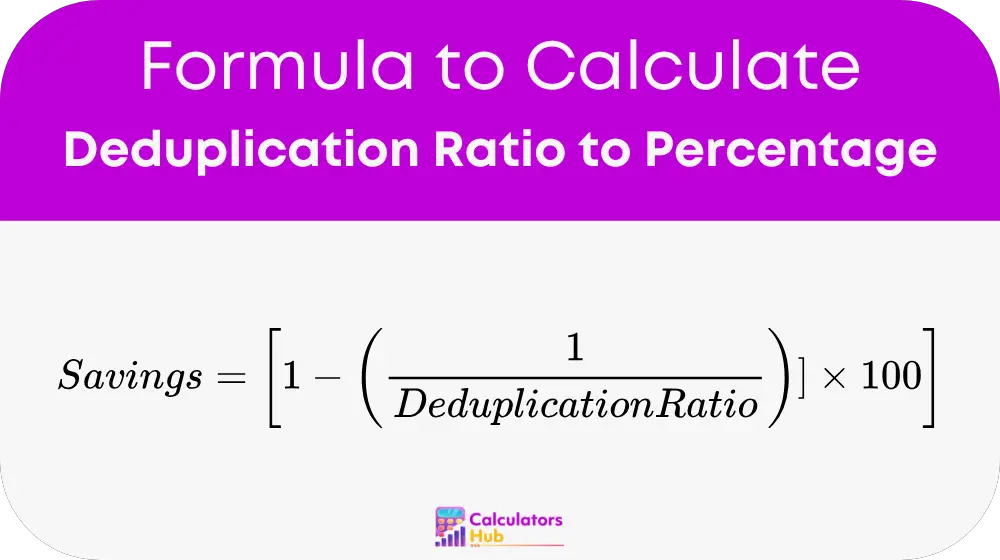A Deduplication Ratio to Percentage Calculator helps convert a deduplication ratio into a percentage value, making it easier to understand how much storage space is saved after deduplication. This tool is widely used in data storage, backup management, cloud computing, and IT infrastructure to assess storage efficiency.
Data deduplication eliminates redundant copies of data, significantly reducing storage costs and improving data management efficiency. Understanding the deduplication savings in percentage form allows businesses to optimize their storage policies, forecast resource needs, and evaluate cost reductions.
Formula for Deduplication Ratio to Percentage Conversion
The percentage savings from a deduplication ratio is calculated using the following formula:

Onde:
Deduplication Ratio = (Original Data Size) / (Deduplicated Data Size)
Esta fórmula fornece uma direct way to convert deduplication ratios into percentage savings, tornando mais fácil assess and compare different storage solutions.
Deduplication Ratio to Percentage Reference Table
A tabela a seguir fornece common deduplication ratios and their corresponding storage savings percentages.
| Taxa de desduplicação | Deduplication Savings (%) |
|---|---|
| 2:1 | 50% |
| 3:1 | 66.7% |
| 4:1 | 75% |
| 5:1 | 80% |
| 8:1 | 87.5% |
| 10:1 | 90% |
| 20:1 | 95% |
This table allows users to quickly estimate data storage savings based on their deduplication ratio.
Example of Deduplication Ratio To Percentage Calculator
A company has implemented a Taxa de desduplicação de 4:1 e quer saber how much storage space is save.
Aplicando a fórmula:
Deduplication Savings (%) = [1 - (1 / 4)] × 100
Deduplication Savings (%) = (1 - 0.25) × 100 = 75%
Isto significa 75% of storage space is save, and the company only needs 25% of its original storage capacity.
Perguntas frequentes mais comuns
The deduplication ratio represents the proportion of data reduction, while percentage savings show how much storage is save in percentage form.
A deduplication percentage of 50% ou superior is consider good, with 80-90% being excellent for environments with high redundancy, such as backups and virtual machines.
Yes, deduplication reduces storage footprint, permitindo faster backups, improved data retrieval speeds, and optimized system performance.